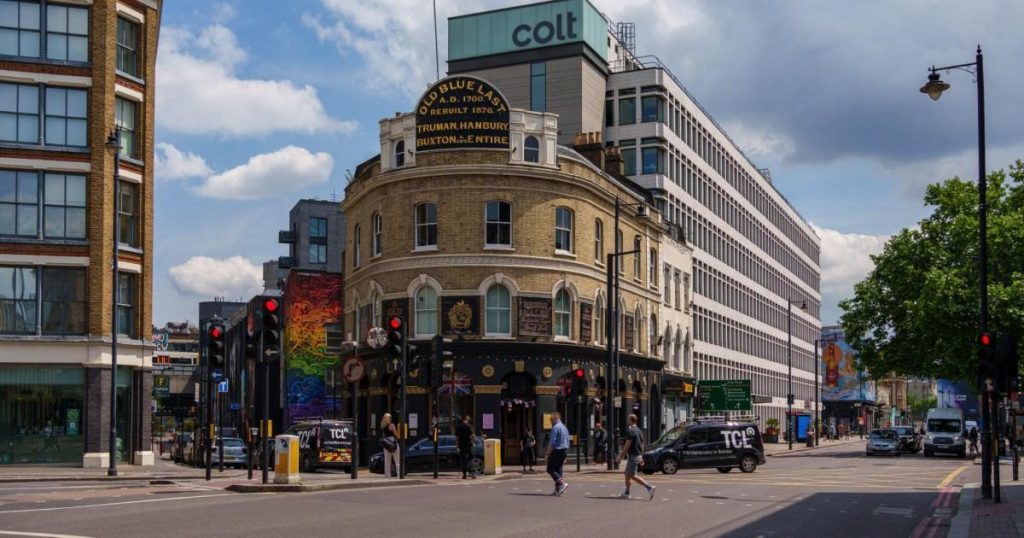Paragraph 1: The Notorious Shoreditch Triangle
The Shoreditch Triangle, a bustling intersection in East London where Curtain Road meets Great Eastern Street, has gained notoriety as a hazardous zone for pedestrians and cyclists. Labeled the second most dangerous junction in London for cyclists, this area has witnessed a concerning number of collisions, including fatalities. Over the past three years, fourteen crashes have occurred, tragically resulting in the deaths of both a pedestrian and a cyclist. This grim record has prompted Transport for London (TfL) and Hackney Council to propose a comprehensive overhaul of the junction in an effort to enhance safety for all road users. Public consultation is underway, inviting Londoners to share their perspectives on the proposed changes.
Paragraph 2: Proposed Transformations for Safer Streets
The proposed redesign of the Shoreditch Triangle encompasses a range of interventions aimed at mitigating risks and improving traffic flow. For cyclists, new crossings and advanced stop lines, extended to 7.5 meters, are planned, allowing them to position themselves ahead of motor vehicles at traffic signals. Pedestrians will benefit from widened pavements and new crossings, enhancing their safety and accessibility. To address the issue of dangerous left turns by motorists, two left-turn restrictions are proposed, reducing the risk of collisions with cyclists. Additionally, a traffic island and slip road will be removed to streamline traffic movement.
Paragraph 3: A Detailed Look at the Proposed Changes
The proposed modifications extend beyond the immediate intersection of Curtain Road and Great Eastern Street, encompassing nearby crossings and streets. A new toucan crossing is planned for Curtain Road north of New Inn Yard, facilitating safe passage for both pedestrians and cyclists. To calm traffic, a raised road level with the footway is proposed at the junction of Charlotte Street, Leonard Street, and Phipp Street. Pedestrian areas will be expanded with widened footways and crossings on Curtain Road north of New Inn Yard and at the junction of Great Eastern Street and Curtain Road. These changes reflect a commitment to prioritizing the safety and comfort of vulnerable road users.
Paragraph 4: Addressing Left-Turn Conflicts and Traffic Flow
A key element of the proposed scheme involves managing left turns at the junction, a known source of conflict between cyclists and motorists. The plan includes prohibiting left turns for motor vehicles from Great Eastern Street into Curtain Road, eliminating the hazardous "left hook" maneuver where drivers overtake cyclists before turning left across their path. Similarly, left turns from Curtain Road into Great Eastern Street will be restricted for motor vehicles, while cyclists will be permitted to turn left, reducing the potential for collisions. Reallocating one general traffic lane on Curtain Road between Scrutton Street and Great Eastern Street to pedestrian space aims to further enhance pedestrian safety and comfort.
Paragraph 5: Critique and Calls for Bolder Action
While the proposed changes are welcomed as a step towards improved safety, some advocate for more radical measures. Simon Munk, head of campaigns at London Cycling Campaign (LCC), points out the existing hostility of the junction towards cyclists, with many choosing to avoid it altogether. He acknowledges the potential of the proposed changes to reduce collision rates but asserts that the plans fall short of creating a truly comfortable and safe environment. The LCC criticizes the proposed deep cycle boxes at traffic lights as outdated and urges TfL to implement separate signals for cyclists instead. Mr. Munk emphasizes the need for bolder interventions that reduce private motor vehicle capacity, prioritizing space for walking, wheeling, and cycling.
Paragraph 6: Striving for a Safer Cycling and Walking Environment
Despite the critiques, the proposed changes represent a significant investment in improving road safety in Shoreditch. Will Norman, London’s Walking and Cycling Commissioner, highlights the Mayor and TfL’s commitment to enhancing safety at dangerous junctions, emphasizing that the proposals aim to create a safer and easier environment for walking and cycling in the area. Hackney Council has expressed support for TfL’s plans. The public consultation provides an opportunity for Londoners to contribute their views on the proposed changes, ensuring that the final design reflects the needs of all road users. The consultation period extends until February 10th, allowing ample time for community feedback.




